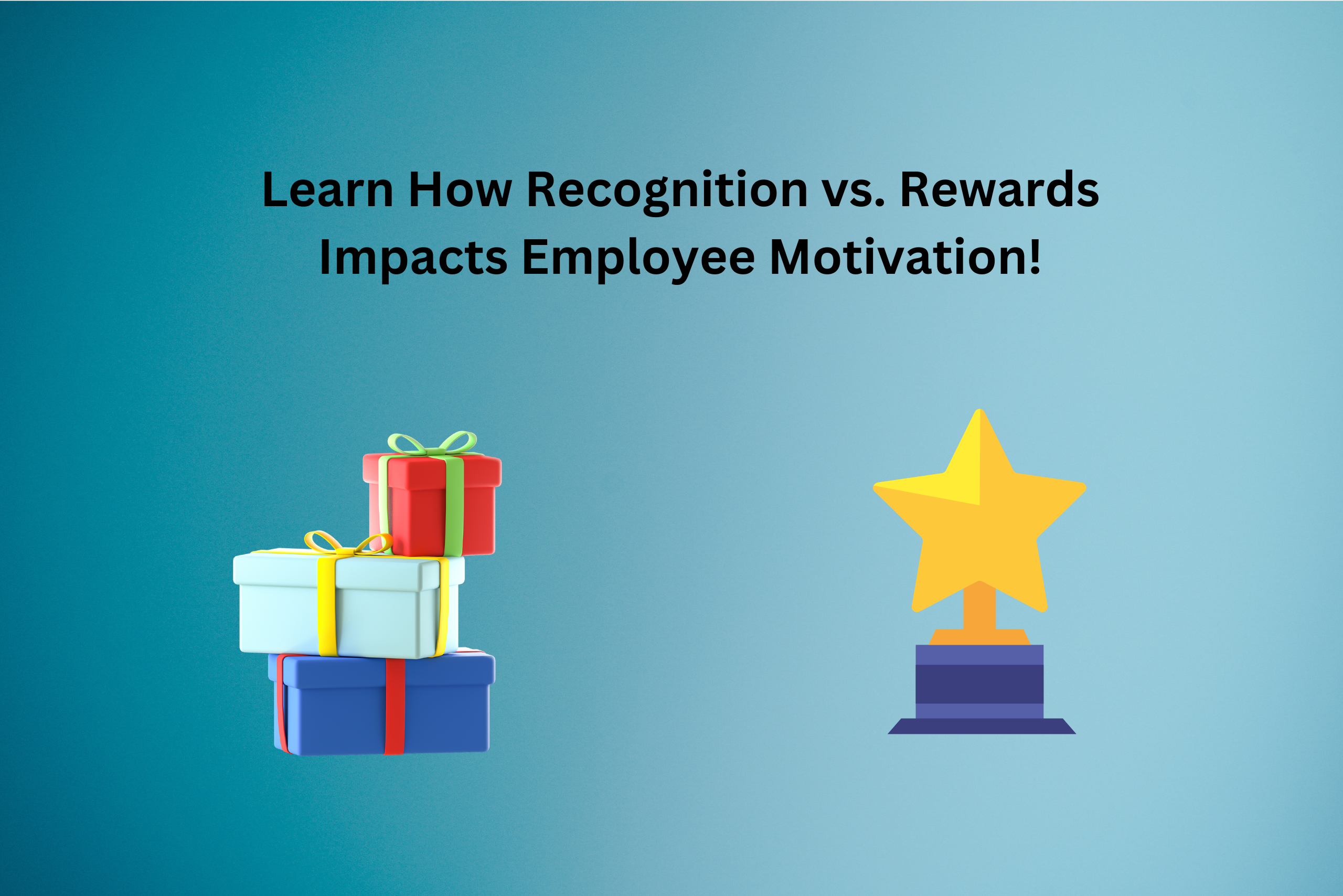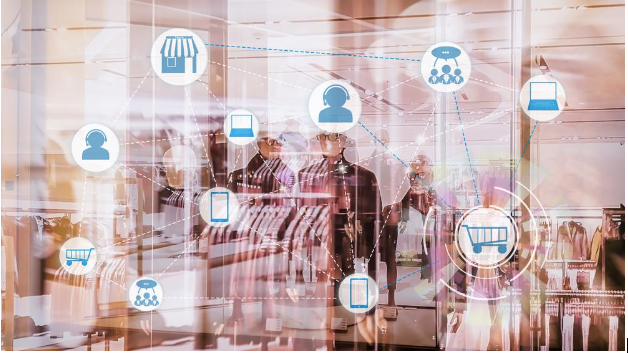Building a positive workplace culture requires more than just handing out rewards or offering recognition—it requires understanding what truly drives your employees. While both approaches aim to motivate and engage your team, they serve different purposes. The key to keeping employees happy and productive lies in recognizing their individual needs and balancing recognition with rewards effectively. In this blog, we’ll break down recognition vs. rewards, explore their unique impacts, and help you determine which one your employees need most.
What Are Recognition and Rewards?
Before diving into which approach works best, let’s clarify what these terms mean and how they differ.
What is Recognition?
Recognition refers to the acknowledgment of an employee’s efforts, achievements, or behaviors. It’s often verbal or symbolic and focuses on reinforcing positive actions in real-time.
Characteristics of Recognition:
- Non-monetary: It’s about words of appreciation or acknowledgment, not material incentives.
- Timely and consistent: Recognition is most effective when it’s immediate and frequent.
- Personalized: Acknowledging specific contributions or actions adds authenticity.
Examples of Recognition:
- Praising an employee during a team meeting.
- Sending a thank-you email for exceptional effort.
- Highlighting achievements on a company bulletin or newsletter.
Recognition satisfies emotional needs by making employees feel valued and appreciated.
What Are Rewards?
Rewards are tangible benefits or incentives given to employees for achieving specific goals or milestones. Unlike recognition, rewards often carry monetary value or are tied to specific achievements.
Characteristics of Rewards:
- Transactional: Rewards are earned through performance or goal completion.
- Planned: Often part of structured programs, like bonuses or employee perks.
- External motivation: Focused on incentivizing behaviors through material benefits.
Examples of Rewards:
- Quarterly bonuses for exceeding targets.
- Paid vacations for exceptional performance.
- Gift cards or vouchers as incentives.
Rewards address extrinsic motivation, encouraging employees to perform specific tasks or meet objectives.
Recognition vs. Rewards: The Key Differences
While recognition and rewards share the goal of employee motivation, their approaches and outcomes differ significantly.
Aspect | Recognition | Rewards |
Purpose | Emotional connection, fostering loyalty | Tangible motivation, driving results |
Timing | Immediate and spontaneous | Often delayed, tied to goals or events |
Nature | Verbal or symbolic | Material or monetary |
Impact | Long-term engagement | Short-term motivation |
Both strategies are valuable, but their success depends on how and when they’re used.
When Do Employees Need Recognition?
1. To Acknowledge Effort
Employees thrive when their hard work is noticed, even if the results aren’t perfect. Acknowledging effort shows that the organization values their dedication.
2. To Boost Morale
Recognition uplifts employees, especially during challenging times or after setbacks. A simple “thank you” can re-energize your team.
3. To Strengthen Relationships
Recognition creates a personal connection between employees and management. It fosters trust and loyalty, helping employees feel like valued members of the team.
When Do Employees Need Rewards?
1. To Celebrate Big Wins
Rewards are perfect for marking significant achievements, like meeting quarterly goals or completing major projects. They act as a tangible “thank you” for exceptional performance.
2. To Encourage Healthy Competition
Incentives like rewards can drive friendly competition within teams, motivating employees to push themselves.
3. To Retain Top Performers
Offering meaningful rewards helps retain high-performing employees by showing that their contributions are valued in concrete ways.
Finding the Right Balance of Recognition vs. Rewards
Balancing recognition and rewards is crucial for creating a workplace where employees feel both appreciated and motivated. Overemphasizing one can lead to disengagement, while neglecting the other may cause employees to feel undervalued. Here’s a detailed look at how to strike the perfect balance between recognition and rewards.
1. Understand Your Employees’ Preferences
Not all employees are motivated by the same things. Some may value public praise, while others may prefer tangible rewards like gift cards or bonuses. Conduct surveys, hold one-on-one discussions, or simply observe your team to understand what resonates most with them.
- Personalization is Key: Tailoring recognition and rewards to individual preferences ensures they feel meaningful. For example, an introverted employee might prefer a private thank-you note over public acknowledgment.
2. Use Recognition for Daily Wins
Recognition should be part of your everyday workplace culture. Employees don’t need to hit massive milestones to deserve appreciation. A simple acknowledgment of their efforts can make a big difference.
- Example: If a team member stays late to complete an urgent task, a quick “Thank you for going the extra mile” can have an immediate positive impact.
- Consistency Matters: Recognizing efforts regularly ensures employees feel valued, not just during performance reviews or big events.
3. Reserve Rewards for Big Achievements
Rewards are most effective when tied to significant accomplishments or milestones. Overusing them can dilute their impact and make them feel less special.
- Celebrate Exceptional Performance: Use rewards to acknowledge above-and-beyond contributions, like exceeding sales targets or leading a successful project.
- Keep It Fair: Ensure that rewards are distributed equitably to avoid perceptions of favoritism, which can lead to resentment within the team.
4. Create a Culture of Appreciation
Recognition and rewards shouldn’t be limited to top-down initiatives. A culture of appreciation encourages everyone—managers and peers alike—to acknowledge and reward contributions.
- Encourage Peer-to-Peer Recognition: Implement systems that allow employees to recognize each other, such as shout-outs during meetings or a company-wide platform for sharing kudos.
- Lead by Example: Managers and leaders should set the tone by consistently recognizing and rewarding employees in a meaningful way.
5. Combine Recognition and Rewards Strategically
Recognition and rewards are not mutually exclusive. They work best when used together in a thoughtful, complementary way.
- Example: When an employee hits a major milestone, pair public recognition with a tangible reward. Announce their achievement in a team meeting and follow it up with a personalized gift or bonus.
- Reinforce Positive Behavior: Use recognition to reinforce day-to-day efforts and rewards to drive specific behaviors or goals.
6. Align With Organizational Goals
Your recognition and reward strategies should align with your company’s values and objectives. This ensures that employees feel connected to the bigger picture.
- Example: If teamwork is a core value, recognize and reward employees who collaborate effectively or help others succeed.
- Set Clear Criteria: Be transparent about how rewards are earned to avoid confusion or frustration among employees.
7. Measure and Adjust Your Approach
Balancing recognition and rewards isn’t a one-time effort—it’s an ongoing process. Regularly evaluate the effectiveness of your strategies and make adjustments as needed.
- Gather Feedback: Ask employees what they think about the current recognition and reward systems. Are they feeling valued? Do they find the rewards meaningful?
- Track Engagement: Use employee engagement surveys or performance metrics to measure the impact of your efforts. If motivation or satisfaction levels are low, it may be time to revisit your approach.
8. Focus on Authenticity
The key to successful recognition and rewards is authenticity. Employees can tell when acknowledgment is insincere or when rewards feel like an afterthought.
- Be Genuine: Take the time to understand what each employee has done and express specific gratitude. Generic praise like “Good job” is less impactful than saying, “Your presentation today was thorough and helped clarify our next steps.”
- Avoid Overdoing It: While recognition should be frequent, excessive praise for minor tasks can feel forced and lose its meaning.
9. Use Technology to Streamline Efforts
Consider using employee recognition platforms or reward management tools to make the process easier and more consistent. These tools can help:
- Track recognition and reward distribution.
- Offer a range of reward options, from gift cards to experiences.
- Enable peer-to-peer recognition through accessible platforms.
What Do Employees Need Most?
While rewards can be a great motivator for hitting goals, studies consistently show that recognition has a deeper and longer-lasting impact. Employees who feel appreciated are more engaged, productive, and loyal to their organizations. However, the key is balance. Overemphasizing one at the expense of the other can create gaps in motivation and satisfaction.
Final Thoughts
Striking the perfect balance between recognition and rewards is essential for creating a motivated, engaged, and loyal workforce. To do so effectively, consider incorporating innovative employee recognition ideas into your approach. While traditional methods like verbal praise or monetary rewards have their place, thinking outside the box can have a greater impact on your employees’ sense of value and belonging.
For instance, recognizing employees with unique perks like customized development opportunities, shout-outs on social media, or offering them the chance to lead a passion project can add a creative twist to your recognition efforts. Pairing these ideas with tangible rewards, such as gift cards or extra time off, can make your strategy even more impactful.
The key is to combine both recognition and rewards in a way that aligns with your company culture and resonates with your employees. By focusing on personalized, thoughtful gestures and incorporating innovative employee recognition ideas, you can create a workplace that values and celebrates its people every day. Remember, the best strategies are those that adapt to your team’s unique needs while fostering an atmosphere of appreciation and growth.
Want to Boost Your Team’s Productivity and Morale?
Learn how consistent recognition can make a real difference in your employees’ performance and overall satisfaction. Check out our blog, How Consistent Recognition Boosts Employee Productivity and Morale, for actionable insights on fostering a culture of appreciation that drives success.
Ready to Take Employee Satisfaction to the Next Level?
Discover how personalized rewards can make a lasting impact on your team’s motivation and happiness. Check out our blog, The Power of Personalized Rewards in Enhancing Employee Satisfaction, to learn actionable tips and strategies for creating a workplace where every employee feels valued.




